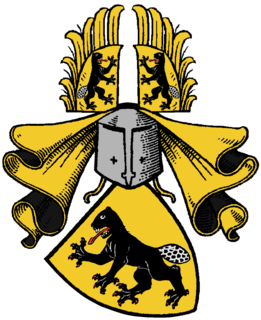
The Prince-Bishopric of Würzburg was an ecclesiastical principality of the Holy Roman Empire located in Lower Franconia west of the Prince-Bishopric of Bamberg. Würzburg had been a diocese since 743. As definitely established by the Concordat of 1448, bishops in Germany were chosen by the canons of the cathedral chapter and their election was later confirmed by the pope. Following a common practice in Germany, the prince-bishops of Würzburg were frequently elected to other ecclesiastical principalities as well. The last few prince-bishops resided at the Würzburg Residence, which is one of the grandest baroque palaces in Europe.

The Schönborn family is a noble and mediatised formerly sovereign family of the former Holy Roman Empire.
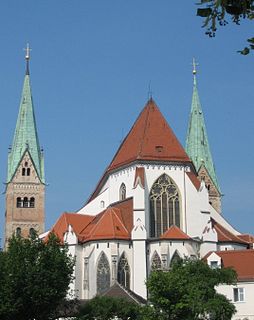
Diocese of Augsburg is a diocese of the Catholic Church in Germany. The diocese is a suffragan of the Archdiocese of Munich.

Würzburg Cathedral is a Roman Catholic cathedral in Würzburg in Bavaria, Germany, dedicated to Saint Kilian. It is the seat of the Bishop of Würzburg and has served as the burial place for the Prince-Bishops of Würzburg for hundreds of years. With an overall length of 103 metres, it is the fourth largest Romanesque church building in Germany, and a masterpiece of German architecture from the Salian period. Notable later additions include work by Tilman Riemenschneider and Balthasar Neumann. The cathedral was heavily damaged by British bombs in March 1945 but rebuilt post-World War II.
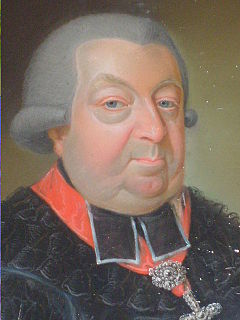
Christoph Franz von Buseck was the Roman Catholic bishop of Bamberg and the last Prince-Bishop of Bamberg.

Georg Marschalk von Ebnet was the Prince-Bishop of Bamberg from 1503 to 1505.

Georg Schenk von Limpurg (1470–1522) was the Prince-Bishop of Bamberg from 1505 to 1522.
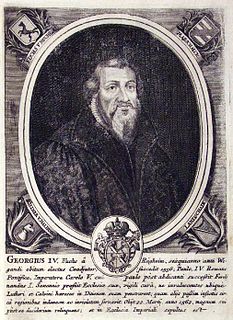
Georg Fuchs von Rügheim (1519–1561) was the Prince-Bishop of Bamberg from 1556 to 1561.
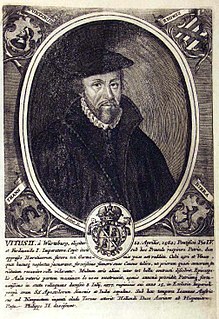
Veit von Würzburg (1519–1577) was the Prince-Bishop of Bamberg from 1561 to 1577.
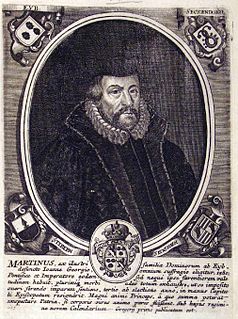
Martin von Eyb (1543–1594) was the Prince-Bishop of Bamberg from 1580 to 1583.

Neytard von Thüngen was the Prince-Bishop of Bamberg from 1591 to 1598.
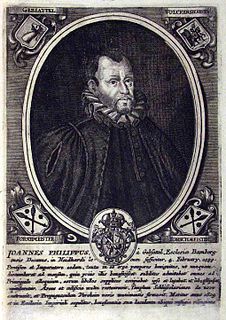
Johann Philipp von Gebsattel was the Prince-Bishop of Bamberg from 1599 to 1609.

Johann Gottfried von Aschhausen (1575–1622) was the Prince-Bishop of Bamberg from 1609 to 1622 and Prince-Bishop of Würzburg from 1617 to 1622.

Johann Georg Fuchs von Dornheim (1586–1633) was the Prince-Bishop of Bamberg from 1623 to 1633. He was known as the "Hexenbrenner" and the "Hexenbischof" (witch-bishop) for presiding over the most intensive period of witch trials in early modern Bamberg.
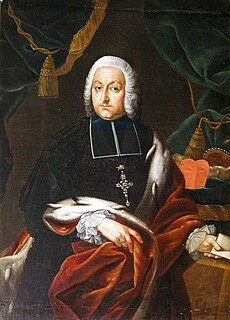
Freiherr Johann Philipp Anton von und zu Frankenstein (1695–1753) was the Prince-Bishop of Bamberg from 1746 to 1753.
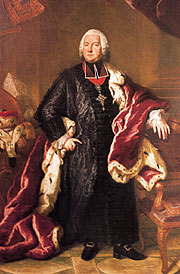
Adam Friedrich Graf von Seinsheim (1708–1779) was the Prince-Bishop of Würzburg from 1755 to 1779 and Prince-Bishop of Bamberg from 1757 to 1779.

Melchior Zobel von Giebelstadt (1502–1558) was the Prince-Bishop of Würzburg from 1544 to 1558.
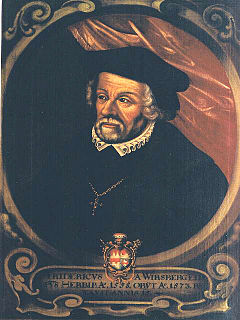
Friedrich von Wirsberg (1507–1573) was the Prince-Bishop of Würzburg from 1558 to 1573.
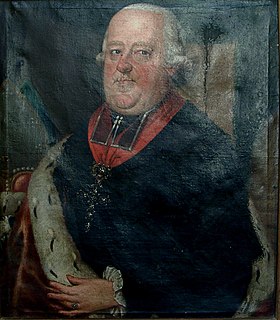
Georg Karl Ignaz Freiherr von Fechenbach zu Laudenbach (1749–1808) was the last Prince-Bishop of Würzburg, holding office from 1795 until 1803, when the Prince-Bishopric of Würzburg was mediatised to the Electorate of Bavaria. He continued to serve as Bishop of Würzburg, though without temporal power, until his death. He was also Bishop of Bamberg from 1805 until his death.




